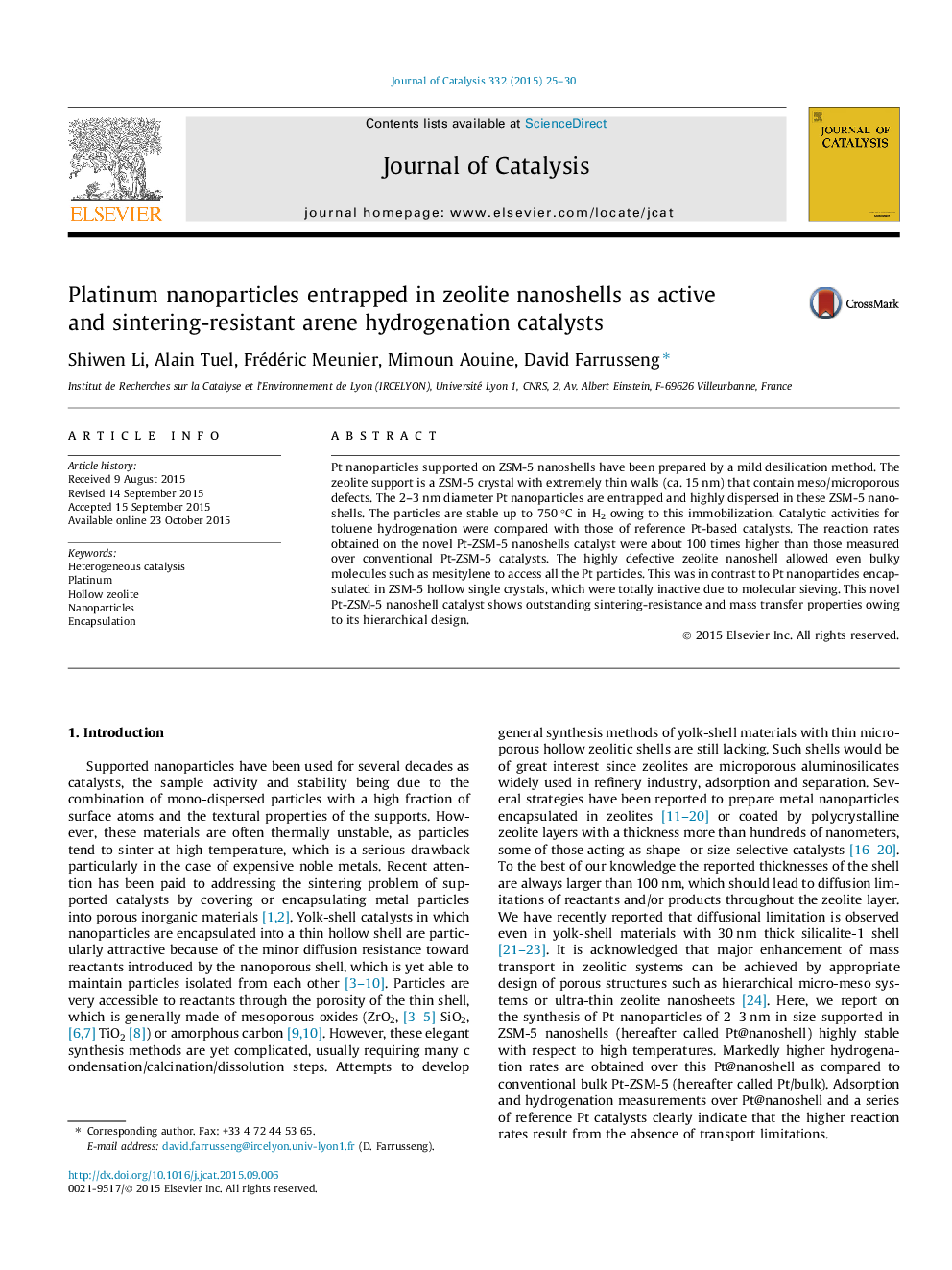| Article ID | Journal | Published Year | Pages | File Type |
|---|---|---|---|---|
| 60719 | Journal of Catalysis | 2015 | 6 Pages |
•Hierarchical hollow Pt-ZSM-5 catalysts were prepared by a new method.•The hollow ZSM-5 (nanoshell of 15 nm) entraps Pt nanoparticles (2–3 nm).•The Pt nanoparticles are very stable against sintering.•The Pt nanoparticles are readily accessible to aromatics for hydrogenation.
Pt nanoparticles supported on ZSM-5 nanoshells have been prepared by a mild desilication method. The zeolite support is a ZSM-5 crystal with extremely thin walls (ca. 15 nm) that contain meso/microporous defects. The 2–3 nm diameter Pt nanoparticles are entrapped and highly dispersed in these ZSM-5 nanoshells. The particles are stable up to 750 °C in H2 owing to this immobilization. Catalytic activities for toluene hydrogenation were compared with those of reference Pt-based catalysts. The reaction rates obtained on the novel Pt-ZSM-5 nanoshells catalyst were about 100 times higher than those measured over conventional Pt-ZSM-5 catalysts. The highly defective zeolite nanoshell allowed even bulky molecules such as mesitylene to access all the Pt particles. This was in contrast to Pt nanoparticles encapsulated in ZSM-5 hollow single crystals, which were totally inactive due to molecular sieving. This novel Pt-ZSM-5 nanoshell catalyst shows outstanding sintering-resistance and mass transfer properties owing to its hierarchical design.
Graphical abstractFigure optionsDownload full-size imageDownload high-quality image (182 K)Download as PowerPoint slide
